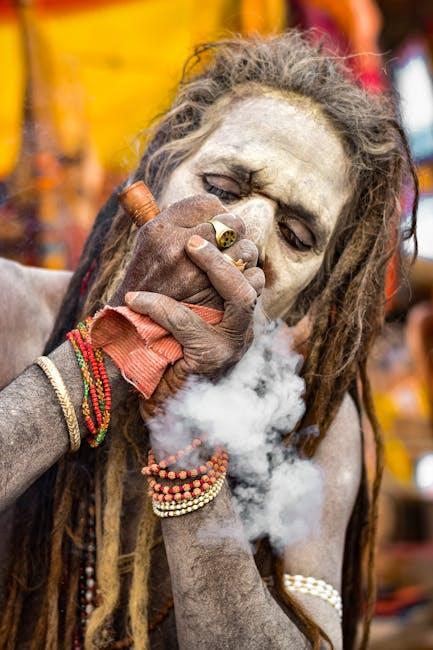In the quiet embrace of dawn, as the first light of day kisses the earth, countless indigenous cultures around the world have, for centuries, turned inward to explore the vast landscapes of the mind and spirit. Meditation, a practice often associated with Eastern traditions, is deeply rooted in the heritage of indigenous peoples, offering a tapestry of techniques as diverse as the cultures themselves. From the rhythmic chants echoing across the plains of North America to the silent contemplation beneath the sacred canopies of the Amazon, meditation practices in indigenous cultures serve as a bridge between the physical and the metaphysical, the ancient and the modern. This article embarks on a journey to uncover these time-honored traditions, revealing how they have shaped and continue to influence the spiritual fabric of indigenous communities. Join us as we delve into the heart of these meditative practices, exploring their origins, meanings, and the profound wisdom they offer in an ever-evolving world.
Exploring the Roots of Tranquility Ancient Meditation Traditions
Across the tapestry of indigenous cultures, meditation has long served as a profound bridge to the divine, a method to align with nature, and a pathway to inner peace. These ancient traditions, though diverse in their practices, share a common thread of seeking balance and understanding through introspection and ritual. Indigenous communities around the world have nurtured meditation as a cornerstone of spiritual life, where the rhythmic pulse of the earth and the whisper of the winds guide their meditative journeys.
- Aboriginal Dreamtime: In Australia, the Aboriginal people engage in Dreamtime meditation, a practice that connects them to ancestral stories and the land itself. This meditative state is not just a retreat inward but a vivid connection to a vast spiritual realm.
- Native American Vision Quests: Among various Native American tribes, vision quests are undertaken as a rite of passage. These meditative quests involve isolation in nature, fasting, and deep contemplation to receive guidance and clarity from the spiritual world.
- Tibetan Bon Tradition: The Bon tradition of Tibet predates Buddhism and incorporates meditation as a means to harmonize with the natural and spiritual worlds. Through visualization and chanting, practitioners seek to achieve a state of tranquility and insight.
These practices, rich in history and cultural significance, highlight the profound respect indigenous peoples hold for the interconnectedness of all life. By understanding and appreciating these ancient traditions, we can glimpse the timeless wisdom that has guided countless generations toward serenity and enlightenment.

The Role of Nature in Indigenous Mindfulness Practices
In many Indigenous cultures, nature serves as a cornerstone of mindfulness practices, deeply intertwined with spiritual and physical well-being. These traditions often emphasize a profound connection to the earth, recognizing it as a living entity with which humans share a symbiotic relationship. Mindfulness is not an isolated practice but is integrated into daily life, with natural elements serving as focal points for meditation and reflection.
- Landscapes: Mountains, rivers, and forests are seen as sacred spaces that offer peace and clarity.
- Elements: The four elements—earth, water, fire, and air—are often used to center thoughts and balance energies.
- Animals and Plants: Observing wildlife and the growth cycles of plants serves as a reminder of life’s interconnectedness and continuity.
These practices invite individuals to slow down, breathe, and listen to the world around them, fostering a deep sense of awareness and presence. By aligning themselves with the rhythms of nature, practitioners cultivate an inner stillness that resonates with the harmony of the natural world.

Sacred Rituals and Their Modern-Day Relevance
Throughout history, indigenous cultures around the world have practiced various forms of meditation, each deeply intertwined with their unique spiritual beliefs and ways of life. These practices are not just rituals but are profound expressions of connection to the Earth, ancestors, and the universe. Today, as the pace of modern life accelerates, the relevance of these ancient traditions is becoming more apparent. They offer a sanctuary of stillness and a means to reconnect with one’s inner self, providing balance in a world often dominated by noise and chaos.
- Connection to Nature: Many indigenous meditation practices involve connecting deeply with the natural world. Whether it’s through silent contemplation by a river or mindful observation of the stars, these rituals remind us of our intrinsic bond with nature.
- Community and Shared Experience: Unlike the often solitary modern meditation practices, indigenous rituals frequently involve communal participation, fostering a sense of unity and shared purpose.
- Ritualistic Elements: The use of traditional music, chants, and symbolic artifacts can enhance the meditative experience, grounding individuals in their cultural heritage.
Incorporating elements of these ancient practices into contemporary life can enrich our personal meditation journeys, offering new perspectives and deeper insights. By embracing these timeless traditions, we not only honor their origins but also cultivate a more profound understanding of our own place in the tapestry of existence.

Incorporating Indigenous Techniques into Daily Meditation Routines
Incorporating the wisdom of Indigenous cultures into daily meditation routines can offer a profound connection to the earth and a deeper understanding of mindfulness. Many Indigenous practices emphasize harmony with nature and the universe, inviting practitioners to center themselves through the rhythms of the natural world. Drumming, for instance, is a powerful technique used by numerous Indigenous communities. The rhythmic beat can help synchronize the heart’s rhythm, leading to a meditative state that fosters peace and introspection.
- Visualization: Imagine yourself as part of the natural landscape, blending with the elements around you.
- Storytelling: Reflect on ancient stories or myths that convey moral lessons and insights into human nature.
- Chanting: Use repetitive vocal sounds or chants to focus the mind and channel energy.
These practices not only enrich the meditation experience but also honor the cultural heritage and spiritual traditions of Indigenous peoples. By integrating these techniques, one can cultivate a meditation routine that is both grounded and expansive, fostering a sense of unity with the world.
Final Thoughts
As we draw the curtain on our exploration of meditation practices in indigenous cultures, we are left with a tapestry woven from threads of wisdom, tradition, and introspection. These age-old practices, passed down through generations, invite us to pause, breathe, and connect with the world in ways that transcend the confines of modern life. They remind us that the path to inner peace and understanding is not a singular journey but a rich mosaic of diverse experiences and insights.
In embracing the meditative traditions of indigenous cultures, we not only honor their heritage but also enrich our own lives. Whether through the rhythmic beats of a drum, the gentle whisper of a mantra, or the serene silence of nature, these practices offer us a sanctuary—a space to reflect, heal, and grow.
As we step away from this narrative, may we carry with us the essence of these timeless teachings, allowing them to guide us towards a deeper connection with ourselves and the world around us. In the words of the elders, may we walk gently upon the earth, with minds open and hearts attuned to the whispers of the past, resonating in the present.
